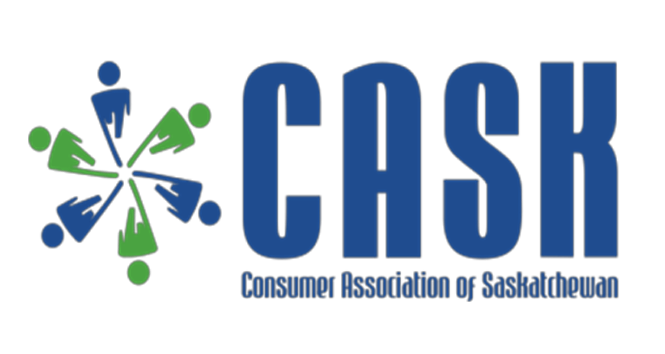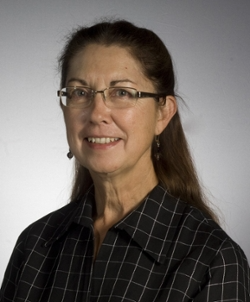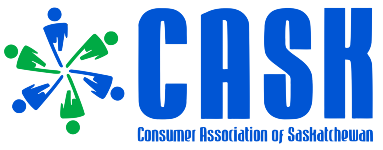SaskWatch Newsletter

Consumer Association of Saskatchewan Inc.
SaskWatch Newsletter Fall 2024
Is It Really a Bargain? How to Check Unit Pricing and Be Sure
by Patricia Lewis
When shopping for groceries everyone wants to make sure they get the best value for their money.
| Product | Price | Unit of measurement | Unit Price | Sale price |
|---|---|---|---|---|
| Cereal | $6.29 | 437g | $1.44/100g | |
| Cereal | $8.99 | 628g | $1.43/100g | $5.99 (unit price $.95/100g) |
| Cereal | $11.49 | 1.15kg | $1.00/100g | |
| Ground coffee | $12.99 | 340g | $3.82/100g | $11.99 (unit price $3.53/100g) |
| Ground coffee | $22.99 | 793g | $2.90/100g | |
| Crackers | $4.49 | 200g | $2.25/100g | |
| Crackers | $5.49 | 352g | $1.56/100g | |
| Orange Juice Name brand | $6.29 | 1.54L | $.41/100ml | |
| Orange Juice Store brand | $4.99 | 1.54L | $.32/100ml |
Comparing products listed above, based on unit price:
Cereal – The largest sized package is the cheapest when the cereal is not on sale. The medium sized package is slightly cheaper than the smallest sized package. However, the medium sized package is considerably cheaper when it is on sale. Ground coffee – The largest package is cheaper than the smaller sized package, even when the smaller package is on sale. Crackers – The largest sized package is the cheapest.
Orange juice – The store brand is the cheapest. The sale price of an item may be the lowest price. However, it is always wise to check the unit price just to make sure. The sale price may not be cheaper when compared to the same product in a different size, often a larger size. Buying a larger sized container is economical only if you can use all of the contents, before they spoil. Stretchflation is a term that refers to the practice of increasing the quantity of a product and at the same time increasing the price disproportionately. This is a subtle approach to raising prices on large sized containers. By using unit pricing, it will be easier to discover this intentional price increase.
Unit pricing can also identify Shrinkflation, where a product is sold in a smaller package for the same price as the original larger sized package. You should also compare the price of name brand products to the store brand products. The store brand product may very well be cheaper. Unit pricing also helps with decision making when a store offers products with random weights.
| Product | Price | Unit of measurement | Unit Price | ||
|---|---|---|---|---|---|
| Chicken Breasts (raw) | $8.97 | 700-900g | 700g | $1.28/100g | |
| 900g | $1.00/100g |
In this scenario, it is always cheaper to buy the package with the largest weight, as the unit price will be the lowest. Unit pricing is a voluntary program. The federal and provincial governments do not have legislation requiring grocery stores to post unit pricing. Unit pricing is often found in larger grocery stores but may not be found in specialty or smaller grocery stores. You will usually find the unit price included in the signage on the shelf. Because there is no standardized format for unit pricing, it may look different at each grocery store. The font size is often small and can be difficult to read, especially on the bottom shelf. This is where you can use your smart phone to take a picture of the bottom shelf. The picture can be enlarged so you can see the unit price better. Unit pricing provides a base price that allows you to compare different sizes and brands of the same product, allowing you to make a more informed decision.
Sources:
Government of Canada, Innovation, Science and Economic Development Canada, https://ised-isde.canada.ca/site/office-consumer-affairs/en/modern-marketplace/comparing-food-prices-unit-pricing
Saskatoon Star Phoenix, August 13, 2024, https://epaper.thestarphoenix.com/saskatoon-starphoenix/20240813
Consumer Reports
What Legal Issues are Saskatchewan Consumers Facing? A New Report Holds the Answers
by Brea Lowenberger, Heather Heavin, Dr. Lisa Jewell, Dr. Bryce Stoliker
In 2023, CREATE Justice, with the Centre for Forensic Behavioural Science and Justice Studies, announced the release of the final reports of the Legal Data Scan and Needs Assessment (the reports), the first of its kind in Saskatchewan, made possible through the support of the Law Foundation of Saskatchewan and the Law Society of Saskatchewan. The purpose of the reports are as follows:
- The Legal Data Scan (2023): scans existing justice data being collected by legal and non-legal organizations in Saskatchewan to determine the usability of that data to identify gaps in the justice system, inform service delivery, improve access to justice, and establish a data commons; and
- The Legal Needs Assessment (2023): captures lawyers’ and legal and non-legal service providers’ perceptions of access to justice issues and legal needs within communities across Saskatchewan, and intends to compliment and bolster user-centered information on access to justice issues and legal needs, sourced through national- and provincial-level surveys (e.g., the Canadian Legal Problems Survey (2022), conducted by Statistics Canada on behalf of the Department of Justice Canada).
The topic of consumer issues arose in both the Legal Data Scan and Legal Needs Assessment reports. Relatedly, as readers may be aware, from a global perspective (World Justice Project, 2019), one of the most prevalent justice-related problems include those pertaining to money, debt, or consumer issues (30%). In Canada’s latest national study on legal problems (Canadian Legal Problems Survey, 2022), large purchases or services (15%) was also found as one of the most common serious problems or disputes.
Read future SaskWatch newsletters for local consumer findings from these reports!
CASK News

Introducing The President
By Lou Hammond Ketilson
The 39th Annual General Meeting of the Consumer Association of Saskatchewan was held in Saskatoon on June 4th 2024. The AGM featured Denny Huyghebaert, Executive Director, Consumer Protection Division, Financial and Consumer Affairs Authority of Saskatchewan as the keynote speaker. His topic, a Regulatory Update on Consumer Protection, was informative and very timely. I am very pleased to be serving Saskatchewan consumers as the incoming President of CASK. Now retired from my faculty position in the Edwards School of Business, consumer education and advocacy has long been an interest of mine. My involvement in the Consumer Association of Saskatchewan has provided an opportunity to continue working in this very important area. I would like to thank our outgoing President, Patricia Lewis, for her leadership and dedicated efforts over the past three years. She took on the role at a very challenging time and has steered the organization through significant changes. CASK has emerged stronger and more sustainable as a result of her efforts. In Ms Lewis’s last report as President, she identified the organization’s goal for the coming year strengthened effectiveness for the benefit of Saskatchewan consumers through
- an improved website and increased presence on social media, and
- an expanded network of collaborators.
I look forward to the coming year as we work toward these critical objectives.
Lou Hammond Ketilson
Consumer Resources
The Canadian Consumer Handbook is intended to help you become a better-informed and more confident consumer. It offers information on a wide range of topics including online shopping, contracts, housing and home renovations, identity theft, and collection agencies to help you build your buying skills. Being a well-informed consumer is key to protecting yourself. Critically examine product and service offerings before purchasing, to make sure there are no unexpected or negative implications. Always remember – if it seems too good to be true it usually is. Along with consumer tips, The Handbook also includes a directory of government and non-government contacts useful to consumers. For more information, visit consumerhandbook.ca.
Ombudsman Saskatchewan Are you having problems with a provincial or municipal government service? Ombudsman Saskatchewan says they may be able to help. They takes complaints about provincial government ministries, agencies, crown corporations and most health entities. They also take complaints about Saskatchewan cities, towns, villages, resort villages, rural municipalities, northern municipalities, and municipal council members. If you’ve tried to resolve problem and you still think it’s unfair, they suggest you make a complaint to their office. Their website: ombudsman.sk.ca has detailed information on how to go about making a complaint or you can phone toll-free: 1-800-667-9787.
Canadian Anti-fraud Centre (CAFC) is Canada’s national anti-fraud call centre and fraud data repository. As of December 31, 2022 there were 90,137 reports of fraud with 56,352 victims loosing a total of $530 million dollars. The call takers are trained anti-fraud specialists who provide advice on the steps that victims should take to recover lost funds and to protect themselves in the future. They also play a crucial role in educating the public about specific fraudulent telemarketing pitches and in collecting and disseminating victim evidence, statistics and documentation, all of which are made available to law enforcement agencies. Check out CAFC’s web for a list and description of common scams plus some tips on how to avoid being caught in one. If you’re reporting a fraud, start with your local police agency and then contact the CAFC toll free at: 1.888.495-8501 or go to their web: antifraudcentre-centreantifraude.ca.
The Little Black Book of Scams is a compact, easy-touse reference guide aimed to increase awareness of the many different kinds of scams targeting Canadians. It provides information on how to recognize scams, how both consumers and businesses can protect themselves, contact information for reporting a scam, and offers a step-by-step guide for victims to reduce their losses and avoid becoming repeat victims. Every year, Canadians lose millions of dollars to scammers who bombard us with online, mail, door-to‑door and telephone scams targetting people of all backgrounds, ages and income levels. The best way to fight fraud is to avoid becoming
a victim. Learn more at competition-bureau.canada.ca.
211 Saskatchewan is a free, confidential service that connects individuals to resources in the province by telephone, text, online chat, or through a searchable website. It offers a database of over 6,000 community, social, non-clinical health, and government services across our province, connecting people to information about: basic human needs (such as housing, food banks, shelter, clothing depots); services of children, youth and families; physical and mental health services; assistance for people with disabilities, seniors and newcomers to Canada; and employment support. When you call or text 2-1-1, or start a web chat session at sk.211.ca, you are connected with a trained Service Navigator, 24/7, that will help determine which services are available and most appropriate to meet your individual needs. Alternatively, you can search for services through their website: https://sk.211.ca.
NotifyNow. In the event of an emergency caused by extreme weather or a man-made event, whether it’s citywide or area specific, NotifyNow will contact you with important information on what to do, where to go, and what to expect. You will receive either a voice message to your home, work or cell phone, an email, or a text message depending on your preference. To receive notifications, you must have some form of contact information entered into their database. Sign up at: saskatoon.ca/notifynow or regina.ca/residents/notifynow/. Disaster can strike with little to no notice, so the best way to be ready for any emergency is to have a plan. Public Safety Canada offers valuable information on being prepared: www.getprepared.gc.ca.
SaskWatch Autumn 2024
Published by:
Consumer Association of Saskatchewan
Contributors:
- Patricia Lewis
- Lou Hammond Ketilson
- Brea Lowenberger
CASK Board of Directors
President: Lou Hammond Ketilson
Vice-President: Patricia Lewis
Secretary: Courtney Pickard
Treasurer: Koby Kelln
Member at Large:
Phone
(306) 242-4909
For inquiries and complaints, please call us.
Feel free to email us with any questions or concerns
Mailing Address
Consumer Association of Saskatchewan Inc. (CASK) P.O. Box 7344 Saskatoon, SK S7K 4J3
Send us mail at the address above for assistance.
Make a Real Impact: Volunteer for Consumer Advocacy
Join Our Volunteer Team Today! Your time matters – even a few hours a month is greatly appreciated.
The Consumer Association of Saskatchewan exists because of the generous commitment of its volunteers.
